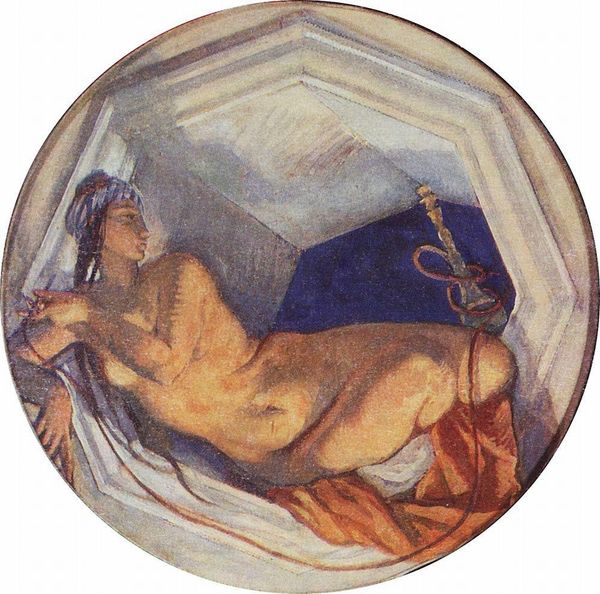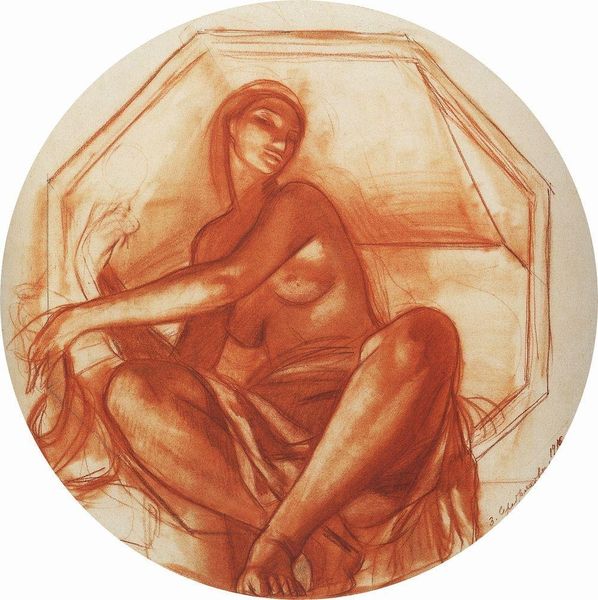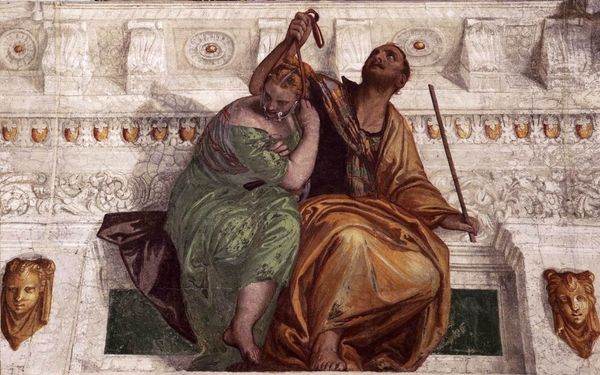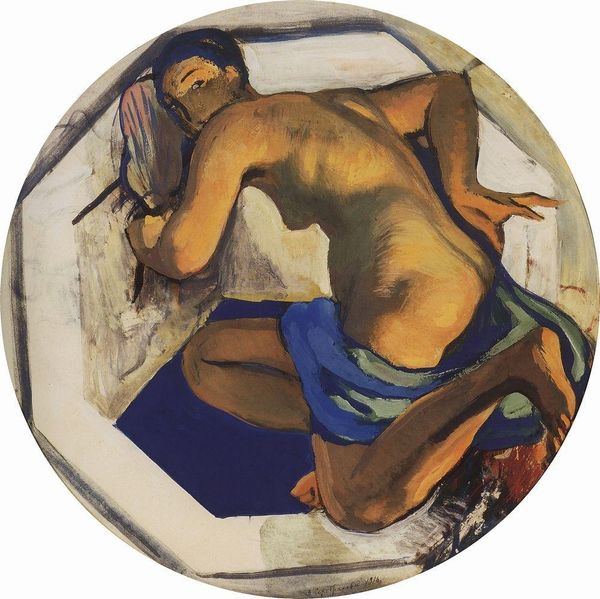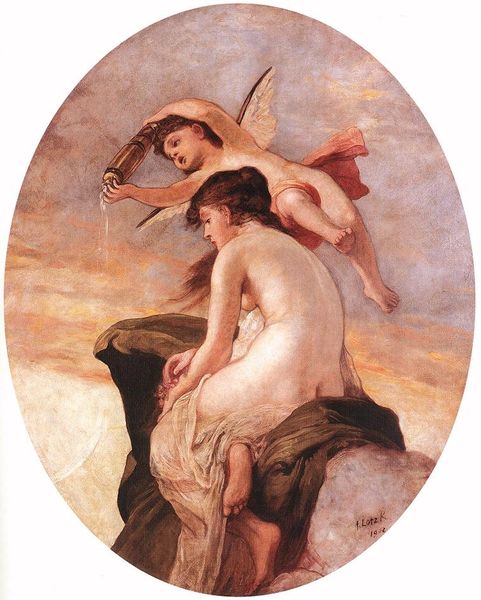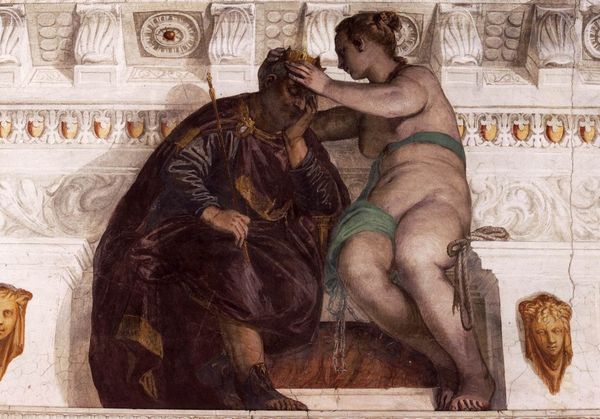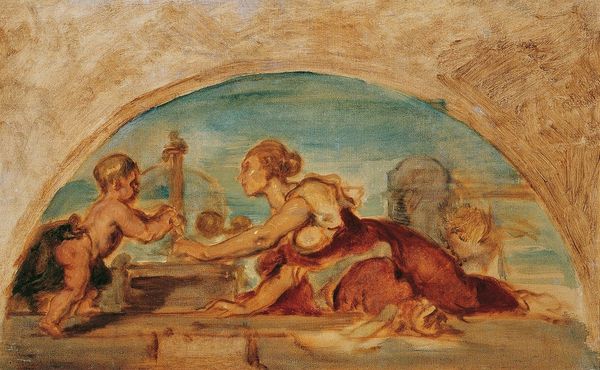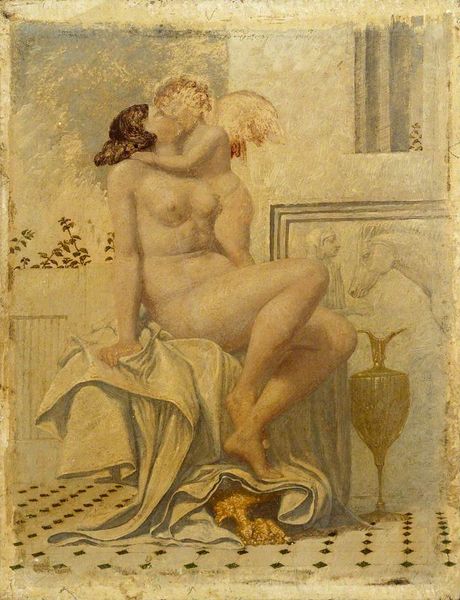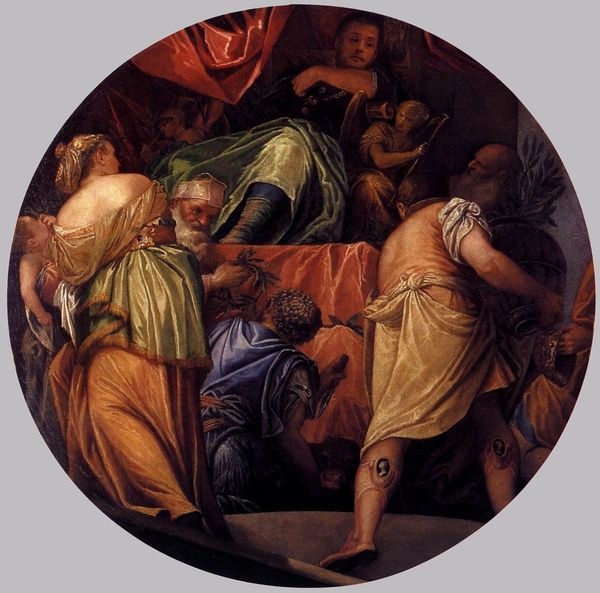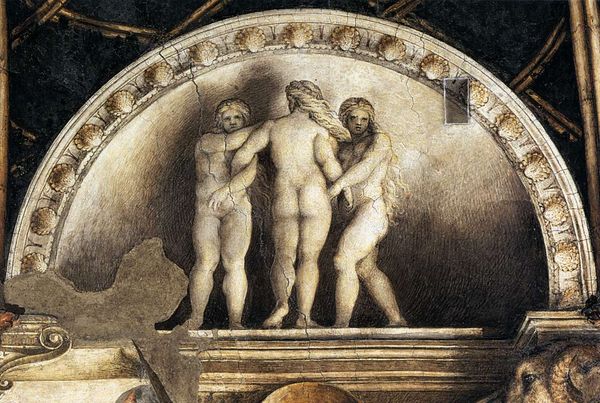
painting, oil-paint
#
portrait
#
painting
#
oil-paint
#
oil painting
#
female-nude
#
portrait head and shoulder
#
orientalism
#
portrait drawing
#
nude
#
portrait art
#
modernism
Copyright: Public domain US
Curator: Immediately striking, isn’t it? There's a quiet intimacy to the piece that I wasn't expecting. Editor: Yes, an intimacy carefully crafted. What we’re looking at here is Zinaida Serebriakova’s "India," an oil painting dating from 1916. It's an example of early 20th-century Orientalism, revealing shifting perspectives in European art at that time. Curator: Orientalism indeed! I notice the heavy emphasis on the seated woman, the exotic other, resting comfortably. There is a touch of sensuality and languor, like she's posing for a secret pleasure. The woman's dark skin juxtaposes beautifully with her pearl jewelry. Her eyes are downcast, closed even; the face tilts, framed by white veil, with an orange fan as subtle decoration... Is she inviting or unapproachable? Editor: Precisely. And the way she’s positioned within the alcove; the almost architectural rigidity emphasizes the passivity often assigned to the East in Western imaginations. We need to consider how images like these contributed to a broader colonial narrative, right down to the cool blues of the alcove backdrop behind. It’s worth asking how complicit Serebriakova was in furthering such ideas or pushing against it. I notice how her work as a woman artist contributed a particularly rich history to this art movement. Curator: That interplay is precisely what makes this piece compelling. There's clearly a studied approach, but it doesn’t negate a visible vulnerability in how Serebriakova renders the human figure. Think of the use of round shapes, emphasizing wholeness. She captures, also, the cultural memory, perhaps of shared femininity, and all of that through the composition itself, not just the overt symbolism. Editor: Absolutely. I think approaching "India" demands an openness to nuance. Rather than dismissing it outright as solely perpetuating orientalist tropes, it invites us to critically consider how Serebriakova navigates—or perhaps inadvertently reinforces—complex power dynamics through visual representation and artistic license. Curator: So true. Viewing this piece allows us to reconsider some established views regarding art and society. The layers here encourage constant evaluation of image and purpose. Editor: Indeed. It’s a piece that prompts more questions than it answers, which, in my opinion, is a hallmark of truly engaging art.
Comments
No comments
Be the first to comment and join the conversation on the ultimate creative platform.
